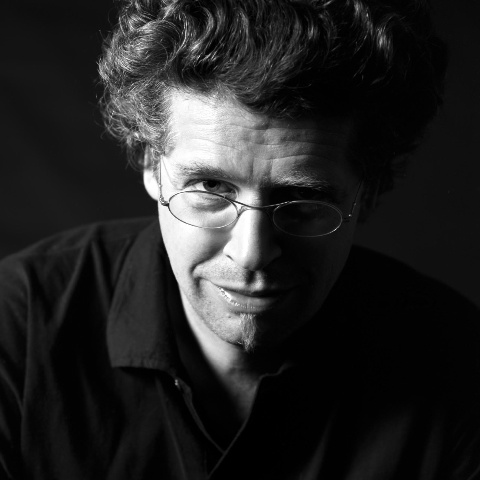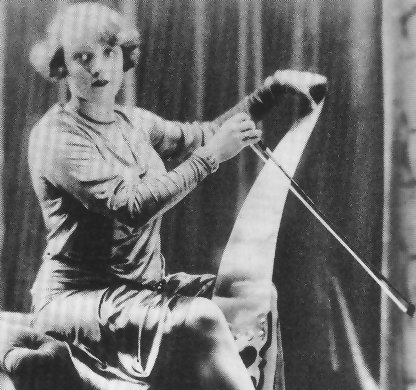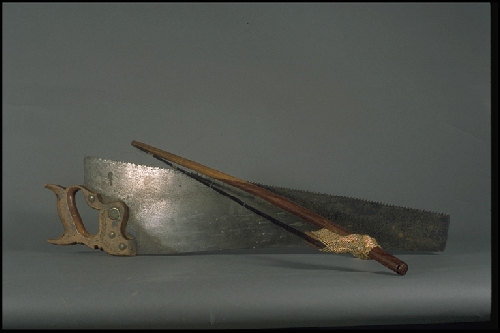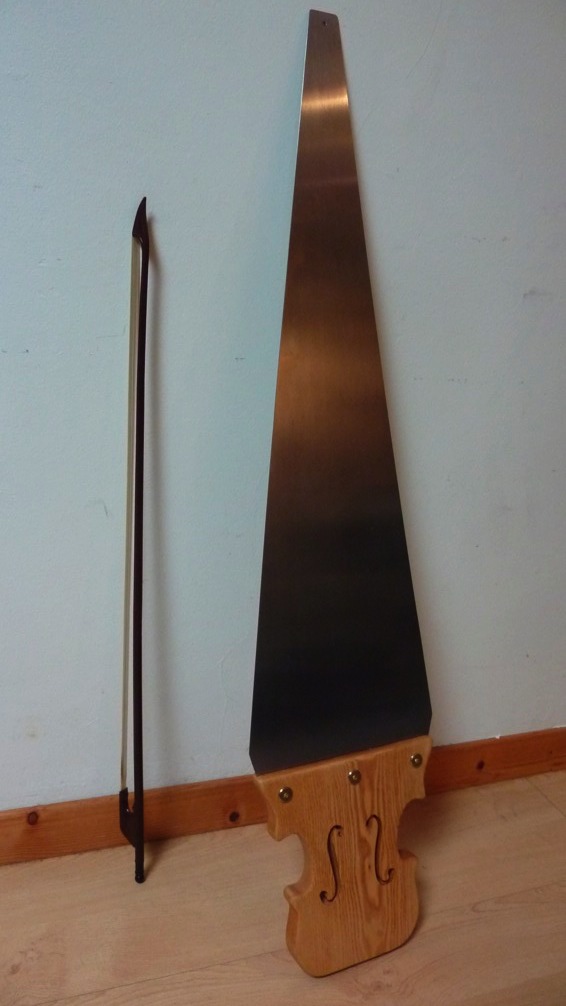|
home
biography
discography
gallery
audio
-
video
performances
composition
press
kit
glass harmonica
ondes
martenot
cristal
baschet
waterphone
theremin
cello
musical saw
crystal
voice
studio
links
|
|
The musical saw is the tool used to saw wood. Although nothing is
known for sure and a lot of stories run on how the musical saw was
born, it seems that the idea of striking it with a mallet or of rubbing
it with a bow to make it vibrate dates back to the 19th century and
belonged to French woodcutters. Several patents were taken out at the
time, both in America and in Europe.
The musical saw became popular thanks to circus and
variety-theatre artists from 1900 onwards. Being quite cheap and easy
to carry, it was used by street musicians, circus clowns, singers, rock
bands, country music groups, dance bands and humorists (for instance
the Belgian humorist Raymond Devos) long before the so-called
‘serious’ musicians adopted it. Such composers as Arthur
Honegger, Henri Sauguet and Georges Crumb composed music for the saw.
Marlene Dietrich, who would use it in her concerts, was its most
famous interpreter.
You can play it seated or - but more rarely - standing,
holding the wooden handle between your legs, and the end of the blade
with your left hand (directly or with the help of a wooden haft) in
order to bend the blade to an ‘S’ shape. Rubbing a given
spot of the blade (depending on its curvature) with a violin bow alters
the pitch of the note. The quasi vocal tone of the saw can be related
to the tone obtained with one of the several playing techniques
available on the ondes Martenot (with the tape and using the sinus wave signal and the resonance sound box) or to that of the Theremin. The musical saw, like the glassharmonica and the waterphone,
belongs to the family of friction idiophones. When well mastered, it
can reach great delicacy of expression. Its sound range can cover over
three octaves.
France probably has, for several decades now, been one of
the leading countries as concerns the manufacturing of musical saws,
notably thanks to the singing blade, a toothless saw Jacques Keller
invented in 1948. About the same time, he published, with a
famous French publisher, a teaching method including, together with
various drills and explanations, original works by Sauguet,
Kœchlin and others. The singing blade can be adapted to the morphology of
each interpreter. Thomas Bloch’s was made-to-measure by Alexis
Faucomprez (Riorges, France).
Marlène Dietrich playing his musical saw
- from left to right -
Old musical saw (collection LRMM - Montreal University)
Singing blade made by Alexis
Faucomprez for Thomas Bloch
|






